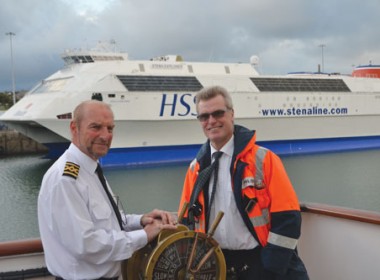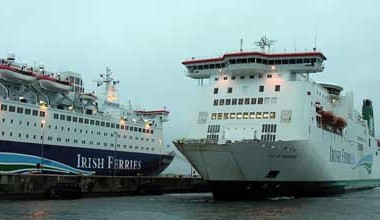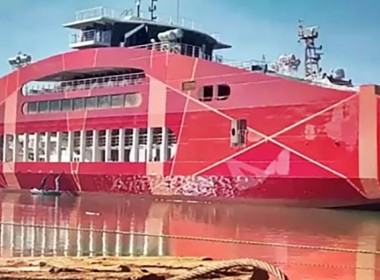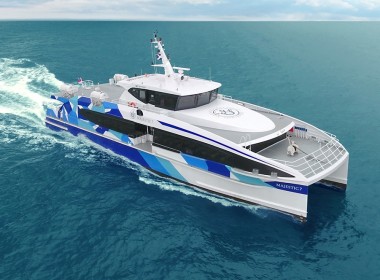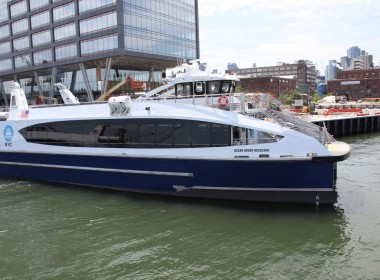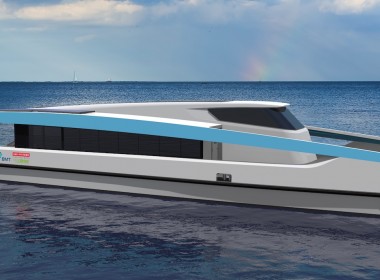COLUMN | Undercooked sulphur rules may increase emissions [Ferry Tales]

Not long now until the January 2015 deadline for ships operating in the sulphur emission control areas (SECAs) of the Baltic Sea, North Sea, and the English Channel to use fuel that does not contain more than 0.1 per cent sulphur – a big drop from the current limit of one per cent.
Trouble is, the price of marine gas oil (MGO) with a content of 0.1 per cent sulphur is currently 40-50 per cent higher than the one per cent-containing heavy fuel still used by shipping companies.
LNG and methanol are among the alternative fuels that meet the 0.1 per cent limit. However, these can only be used in newly built ships. Making existing ships compatible with alternative fuels is not economically viable. Also, the shoreside infrastructure for using these fuels is still underdeveloped (though improving). Some operators are investing in scrubbers, while others remain unconvinced by scrubber technology and have instead looked at options such as methanol.
Routes are already beginning to fall. Most recently, DFDS closed its Esbjerg–Harwich route due to the cost impact of the new rules. Whilst the majority of the route’s freight volumes will transfer to another freight-only route, the closure means passenger services between Denmark and England have ceased completely.
For its part, Stena Line has described the sulphur directive as one of the largest negative political decisions taken since duty-free shopping was discontinued, adding the ruling will have “a significant economic impact” on its business, pushing up its fuel costs by around £41 million (US$65.5 million) a year and forcing it to increase prices for its freight customers.
Stena Line CEO Carl-Johan Hagman said the company was supportive of environmental improvement regulations as long as the changes are the same for everyone and are implemented at a rate that operators and customers can handle. Unfortunately, he continued, this is not the case with the new sulphur rules, and the increase in fuel costs will impact Northern Europe’s trade due to the large volume of trade occurring via sea transport.
The directive in itself will most likely lead to more environmental pollution, defeating the whole purpose. It is estimated that the energy required to refine the fuel used by ships to operate in the SECAs alone will add 12 million tonnes of CO2 to the atmosphere every year.
Also, the increasing pressure on road transport will further add pressure to environmental issues.
Modern ferry safety on the anniversary of the Estonia disaster
The sinking of the ferry Estonia off the southern coast of Finland 20 years ago has been commemorated at ceremonies in Stockholm and Tallinn. Europe’s worst peacetime shipping disaster killed more than 800 people, including 501 Swedes and 290 Estonians.
Two decades later, there is no question that ferry transport is indeed safer, at least in some parts of the world. South Korea’s loss of about 300 people, mostly teenage schoolchildren, is a stark reminder that ferry safety in some Asian countries still leaves a lot to be desired.
The loss of the Sewol was a tragedy that need not have happened.
The Estonia disaster unfolded over the course of an hour after strong waves ripped off the 54-tonne bow visor. Water flooded into the car decks, where the free surface effect took over and capsized the vessel, forcing a scramble for life as panic ensued for the nearly 1,000 people onboard.
The Estonia sailed from the Estonian capital of Tallinn, fully laden with 989 passengers and crew and heading for Stockholm, Sweden. Mikal Öun, one of only 137 people who survived, gave an interview in 2004. He said that most passengers had retired to their cabins early because of the storm.
“I had been sleeping for one or two hours, a huge jolt woke me up. It was as if huge waves were lifting up the ship,” he said. “Then I heard several loud bangs as if trucks on the car deck were falling over. Suddenly the ship began to lean to one side. I got dressed and left the room.”
Öun said he stepped out of his cabin to witness people screaming and running down the corridors.
The bow visor, a swinging door to load and unload vehicles, was later found by investigators to have been poorly welded and not properly maintained. To make matters worse, officers on the bridge were unable to see the bow, so they didn’t react until it was too late.
Alarms were not sounded until five minutes after the ship began listing. Water flowed into the ship at the rate of 20 tonnes a second. Within 40 minutes the ‘Estonia’ was gone.
Combined with the earlier sinking at Zeebrugge of the Herald of Free Enterprise in 1987, the Estonia tragedy prompted the IMO to correct design flaws and evacuation procedures. IMO design changes, including better escape routes for passengers, were applied to subsequent ferry newbuildings and included quick evacuation requirements.
But then we had the Sewol. Once again, the IMO must look again at the design and safety procedures taken on board from the previous disasters. IMO Secretary General, Koji Sekimizu, responded to the Sewol loss by saying, “the time has now come for IMO to step forward to take action to improve the safety of passenger ships carrying the general public, regardless of the nature of their voyage, whether domestic or international.”
Does this mean the IMO might extend its mandate to cover domestic services after heavy loss of life in a number of unregulated ferry accidents in developing nations? I’m not convinced such a move would bring any real change, but it would be a step in the right direction.


